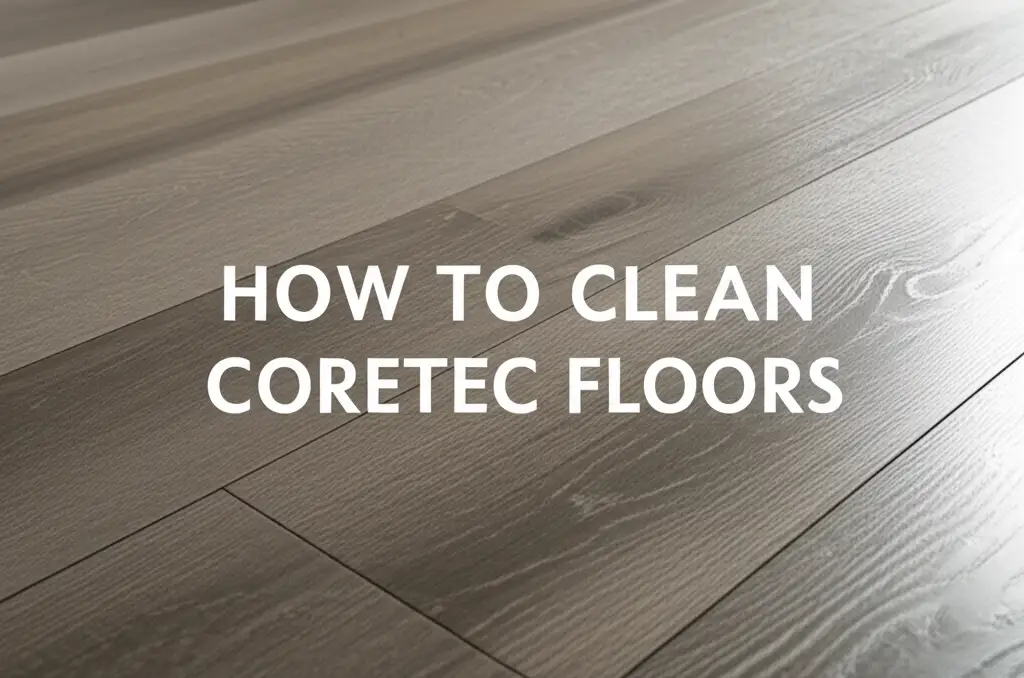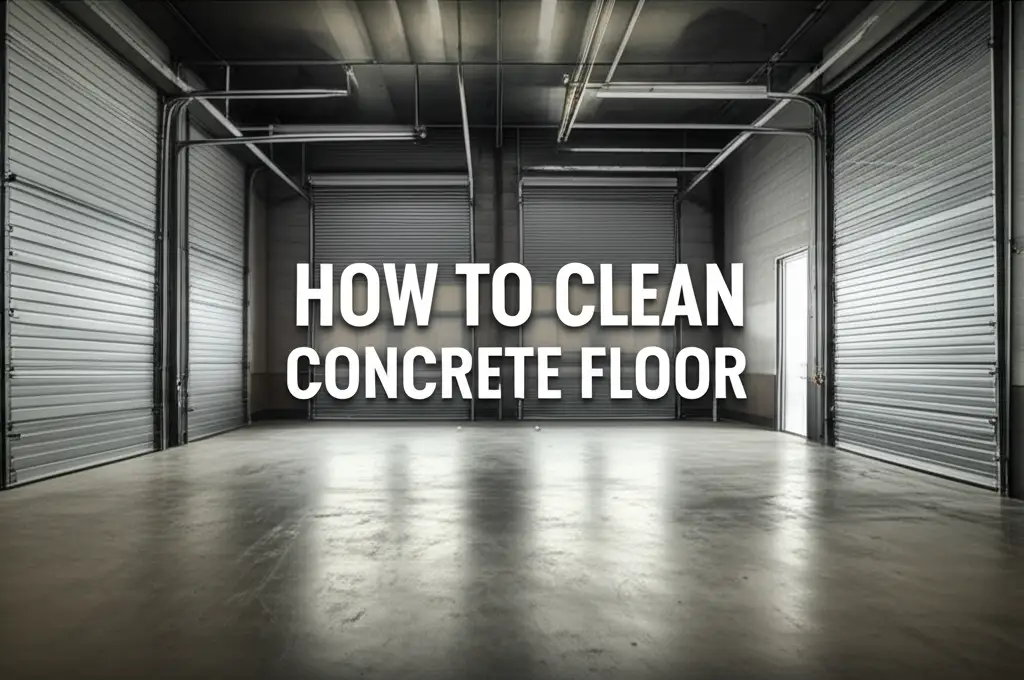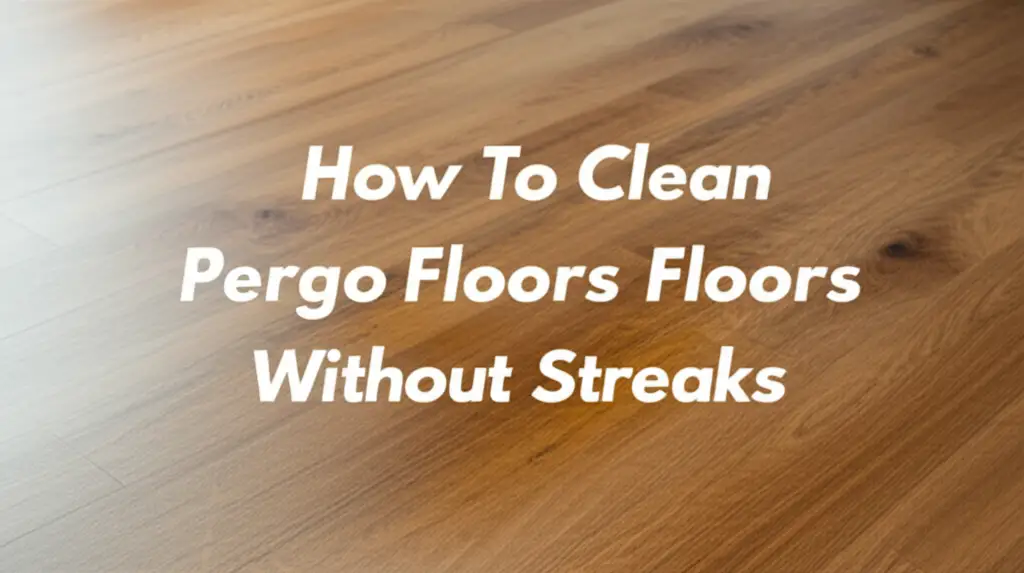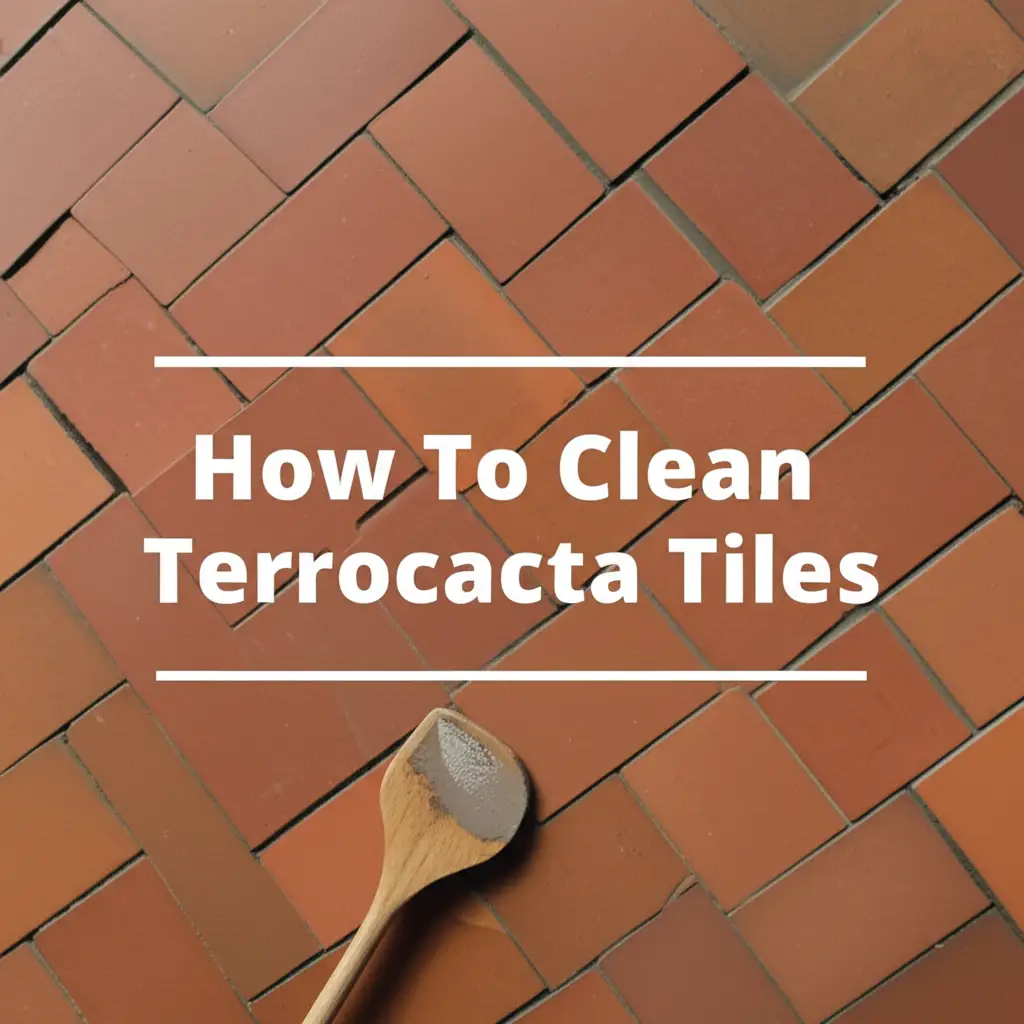· Floor Care · 12 min read
How To Clean Waxed Wood Floors

Keep Your Floors Gleaming: How to Clean Waxed Wood Floors Safely
Waxed wood floors add charm to any home. Their deep luster and classic appeal are timeless. However, these floors need specific care. Regular cleaning helps them stay beautiful for years. Using the wrong products or methods can cause damage.
We will show you how to properly clean waxed wood floors. This guide covers everything from daily upkeep to deep cleaning. You will learn the best ways to protect your investment. Let us make your waxed wood floors shine.
Takeaway
- Gentle Cleaning: Always use dry methods first, like dust mopping or vacuuming.
- Minimal Moisture: Use damp (not wet) mops only when necessary.
- Right Products: Select cleaners specifically for waxed wood or mild, pH-neutral options.
- Avoid Harsh Chemicals: Stay away from ammonia, strong detergents, or abrasive cleaners.
- Address Buildup: Understand when and how to safely remove old wax layers.
To clean waxed wood floors, start with regular dust mopping or vacuuming. For deeper cleaning, use a damp cloth or mop with a pH-neutral cleaner. Avoid excess water and harsh chemicals. This approach protects the wax finish and keeps your floors looking their best.
Understanding Your Waxed Wood Floors
Waxed wood floors are a classic choice for many homes. They offer a unique beauty and a warm glow. Unlike polyurethane finishes, wax penetrates the wood. It creates a protective, soft sheen. This finish needs different care than other floor types.
Waxed floors show scuffs and scratches differently. The wax layer can be easily repaired. You can buff minor marks away. This makes them durable in their own way. However, wax is also more sensitive to water. Excessive moisture can lift the wax. It leaves white spots or dull areas.
Understanding this finish is key. Knowing its properties helps you choose the right cleaning method. It ensures you maintain its beauty without damage. My own experience with these floors taught me patience. I learned that gentle methods work best. It is about preserving the natural look.
The wax also protects the wood. It acts as a barrier against spills and dirt. Over time, the wax can attract dust. It can also show wear. This means regular, specific cleaning is necessary. We must keep the wax layer clean. We must also keep it intact.
Preparing Your Waxed Wood Floors for Cleaning
Proper preparation makes cleaning much easier. It also protects your floor from damage. Before you apply any liquid, ensure the floor is clear. Remove all furniture and rugs from the area. This gives you full access to the surface.
Next, remove loose dirt and debris. Use a soft-bristle broom or a dust mop. I prefer a microfiber dust mop myself. It traps dust without scratching. A vacuum cleaner with a hard floor attachment also works well. Make sure the vacuum has soft wheels. This prevents marks on your delicate wax finish.
Pay close attention to corners and edges. Dirt can collect there easily. Remove any small stones or grit. These can scratch the wax when you clean. Remember, prevention is better than cure for floor damage. Take your time with this step.
Wipe down baseboards if they are dusty. This stops dust from falling onto your clean floor later. This preparation sets the stage for effective cleaning. It is a simple but important first step. It ensures you clean the floor, not just move dirt around.
Gentle Cleaning Methods for Daily and Weekly Care
Daily and weekly cleaning keeps your waxed wood floors looking good. It prevents dirt from building up. Less dirt means less need for deep cleaning. The goal is to remove surface dust and light grime.
For daily care, use a dust mop. A microfiber dust mop is ideal. It grabs dust and pet hair effectively. Sweep across the entire floor surface. This prevents small particles from scratching the wax. I always do this daily in high-traffic areas.
For weekly care, vacuum your floors. Use a vacuum with a soft brush attachment. Ensure it is safe for hard floors. Vacuuming lifts more embedded dust. It also removes tiny grit that dust mops might miss. Be gentle around edges and corners.
Spot cleaning is also part of routine care. If you see a small spill, wipe it at once. Use a clean, dry cloth. For sticky spots, use a very lightly damp cloth. Then dry the area immediately. Avoid letting liquids sit on the wax. This routine keeps the floor clean without harsh methods. It preserves the wax finish.
Dealing with Dirt and Minor Stains on Waxed Wood
Even with regular care, dirt and minor stains happen. Addressing these quickly protects your waxed wood floors. Different types of stains need specific approaches. Always test any cleaner in a hidden spot first.
For general dirt buildup, a slightly damp mop can help. Wring out the mop until it is almost dry. Water is the enemy of waxed floors. Use a floor cleaner made for waxed wood, or a pH-neutral cleaner. Mop a small section at a time. Then dry the area immediately with a clean cloth. This prevents water spots and dullness.
For scuff marks, try rubbing them gently. Use a soft cloth. Sometimes, a little fresh wax can fix them. Apply a tiny amount. Buff it lightly with a clean cloth. This often makes the scuff disappear.
Dealing with tougher stains requires precision. For instance, ink marks can be tricky. Try dabbing with a cloth moistened with mineral spirits. Do not rub too hard. Alcohol spots might respond to rubbing with very fine steel wool (0000 grade) and then re-waxing. For general wood stains and specific issues like pet accidents, you might find our guides helpful. Learn how to clean stains on wood for various situations. If you face a common problem like pet urine, our article on how to clean dog urine from hardwood floors can provide specific solutions. Remember, always work carefully. You want to remove the stain without harming the wax.
Addressing Wax Buildup and Dullness
Over time, waxed wood floors can develop buildup. Layers of old wax, dirt, and polish can accumulate. This causes the floor to look dull. It can also create a sticky surface. When your floor loses its luster, it is time to remove old wax.
Removing wax buildup is a crucial step. It refreshes the floor. You might need a specific wax stripper. Always choose a product made for waxed wood floors. Read the product instructions carefully. They will guide you on dilution and application. Most strippers require good ventilation. Open windows and doors.
Apply the stripper in small sections. Let it sit for the recommended time. Do not let it dry on the floor. Use a soft cloth or a non-abrasive pad to gently rub. You will see the old wax lifting. Once removed, wipe the area clean. Use a cloth dampened with clean water. Dry immediately. Repeat for the entire floor.
Sometimes, dullness is not just buildup. It can be due to minor scratches. In these cases, a light buffing might help. Use a floor buffer with a white pad. This can restore some shine. If the floor is very old and has significant issues beyond wax, our guide on how to clean old wood floors without sanding might offer further insights into restoration without drastic measures. Removing old wax prepares your floor for a fresh new coat. This brings back its original beauty.
Choosing the Right Cleaning Products
Selecting the correct cleaning products is vital for waxed wood floors. The wrong choice can strip the wax. It can also dull the finish. Always check product labels carefully. Look for terms like “waxed wood safe” or “pH-neutral.”
Avoid harsh chemicals. This includes ammonia-based cleaners. They can dissolve wax and leave streaks. Strong detergents are also not suitable. They can strip the protective layer. Many common floor cleaners are designed for sealed floors. These are not for waxed surfaces. I learned this the hard way myself. My friend used a multi-surface cleaner on her waxed floor. It immediately left a cloudy film.
Instead, opt for cleaners specifically formulated for waxed floors. These often have a very mild, gentle formula. Some are water-based and pH-neutral. You can also use plain warm water. Use it sparingly. A very slight dampness is enough.
For daily cleaning, a dry microfiber mop is your best friend. For sticky spots, a tiny bit of mineral spirits on a cloth works. Always apply the cleaner to your cloth or mop, not directly to the floor. This prevents over-wetting. While some wood floors can handle certain solutions, like those mentioned in our article on how to clean wood floors with vinegar, vinegar is generally not recommended for waxed floors because its acidity can dull or even strip the wax. It’s important to differentiate.
When removing old wax, use a dedicated wax stripper. These products are designed to break down the wax safely. They do not harm the wood underneath. Always follow the manufacturer’s directions for any product. Proper product choice ensures your floor stays beautiful.
Maintaining the Luster: Re-waxing and Ongoing Protection
Once your waxed wood floors are clean, maintaining their luster is the next step. Re-waxing is an important part of this. It replenishes the protective layer. It brings back the floor’s deep shine. The frequency of re-waxing depends on foot traffic. High-traffic areas might need it every few months. Low-traffic areas might only need it once a year.
Before re-waxing, ensure the floor is completely clean and dry. Any dirt or old, damaged wax trapped under new wax will show. Apply a thin, even coat of a good quality paste wax or liquid wax. Work in small sections. Use a clean, soft cloth or a wax applicator. Do not apply too much wax. Thinner coats are better than one thick one. Too much wax can make the floor sticky. It can also attract dirt.
Allow the wax to dry fully. Check the product instructions for drying times. Once dry, buff the floor. Use a clean, dry cloth or a floor buffer with a clean pad. Buffing creates the beautiful shine. Work in circular motions until the desired luster appears. My tip: buffing is the most satisfying part. Seeing the shine return is great.
For ongoing protection, consider placing rugs in high-traffic areas. Use felt pads under furniture legs. Wipe up spills immediately. These simple steps protect your waxed finish. They extend the life of your wax layer. This reduces the need for frequent re-waxing. Consistent care ensures your floors stay beautiful. It protects your investment for years to come.
FAQ Section
Q1: Can I use a steam mop on my waxed wood floors?
No, you should never use a steam mop on waxed wood floors. Steam mops use high heat and moisture. Both of these can severely damage the wax finish. They can cause the wax to melt, streak, or lift. This leaves dull spots or an uneven appearance. Stick to dry or very lightly damp cleaning methods to keep your floors safe.
Q2: How often should I clean my waxed wood floors?
For daily care, dust mop or vacuum high-traffic areas. For weekly care, vacuum the entire floor surface. Deeper cleaning with a damp mop should happen only when necessary. This might be monthly or quarterly, depending on traffic and dirt. Re-waxing is typically needed every 6-12 months.
Q3: What should I do if my waxed floor gets water spots?
If water spots appear, act quickly. For fresh spots, dry the area immediately. For older, white water spots, you might try gently rubbing them. Use a soft cloth with a tiny amount of mineral spirits. You can also try a very fine steel wool (0000 grade). Then re-wax the specific area to restore the finish.
Q4: Can I use floor polish or Murphy Oil Soap on waxed wood?
Most floor polishes are not suitable for waxed wood. They can create a sticky buildup or react poorly with the wax. Murphy Oil Soap is a common wood cleaner. However, it can leave a residue on waxed floors. This residue may dull the finish or attract more dirt. It is best to use cleaners made specifically for waxed wood.
Q5: How do I remove a dark stain from my waxed wood floor?
Dark stains like pet urine or old water marks need careful treatment. First, try to clean the surface wax. Then, gently clean the stained wood. You might need a specialized wood cleaner or a mild bleach solution. Apply very little and blot. After the stain lifts, dry and re-wax the area. For stubborn cases, professional help might be needed.
Q6: Is it possible to make my dull waxed floor shiny again without re-waxing?
Sometimes, light dullness can be fixed by buffing. Use a clean, dry, soft cloth or a floor buffer with a white pad. Buff the dull areas gently. This can redistribute the existing wax and restore some shine. If buffing does not work, it usually means the wax layer is worn. Then, re-waxing is the best solution.
Conclusion
Cleaning waxed wood floors seems daunting at first. However, it is a straightforward process. The key is gentle care and using the right products. Regular dust mopping and vacuuming prevent dirt buildup. Spot cleaning addresses minor spills immediately. Understanding when to use a damp mop and when to strip old wax is also important. This knowledge protects your beautiful floors.
By following these steps, you maintain the classic charm of your waxed wood floors. You keep them clean and well-preserved. Remember, prevention is often the best cleaning strategy. Keep your floors free of grit and wipe spills quickly. This care extends the life and beauty of your finish. Are you ready to give your waxed wood floors the care they deserve? Start today. Your floors will thank you with a lasting, beautiful shine.
- waxed wood floors
- wood floor cleaning
- floor maintenance
- hardwood care
- wax buildup
- floor cleaning tips
- home cleaning




